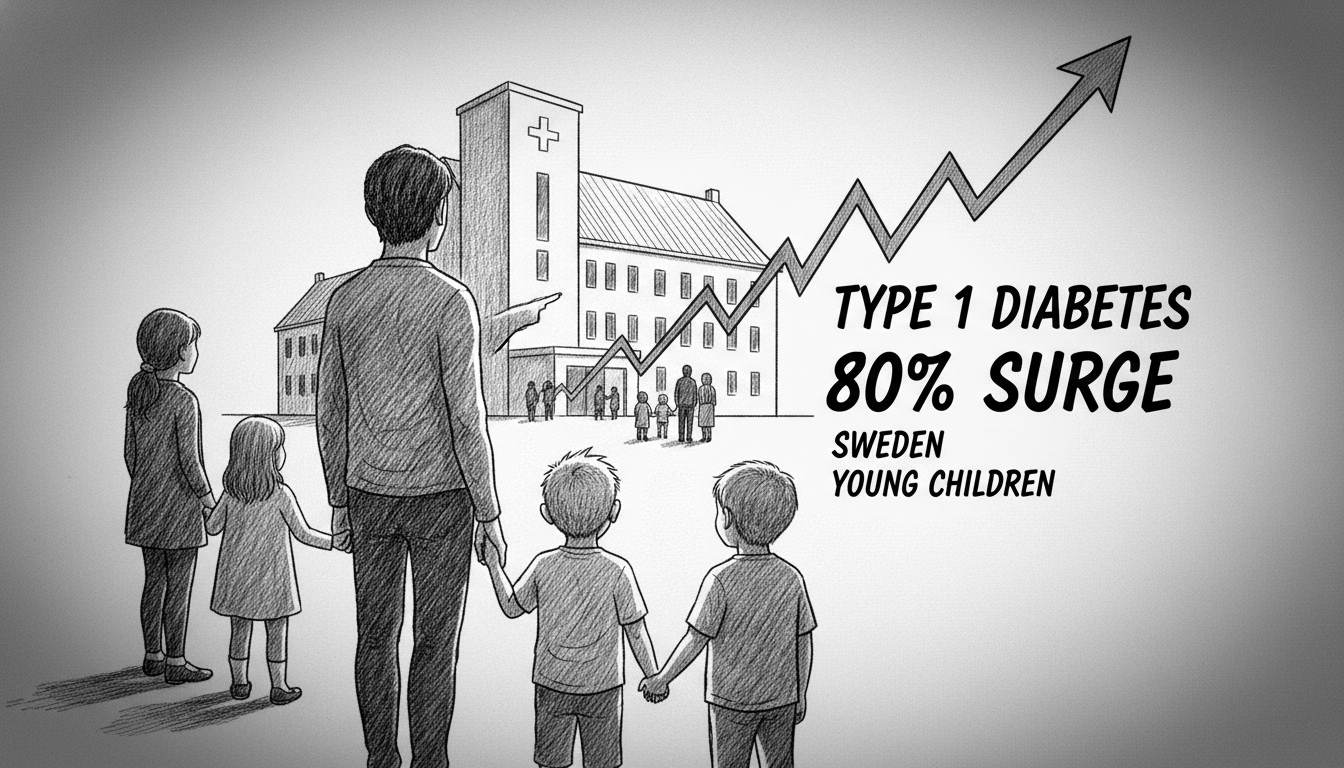A dramatic increase in type 1 diabetes cases among young Swedish children has medical experts concerned. New data reveals an 80.4 percent surge in affected boys aged 0-4 since 2010, with girls in the same age group experiencing a 26.2 percent increase. The overall number of young children with diabetes has jumped 53 percent during this period.
Linn, a mother whose four-year-old son Frank was diagnosed last year, describes the life-changing impact. 'I doubted I could learn everything new and give Frank a good life,' she recalls. 'But I do it. I have no choice.' Her days now revolve around insulin pumps, special diets, and constant monitoring through alarm systems.
Medical professionals acknowledge the alarming trend but lack definitive answers. Pediatric immunology professor Petter Brodin suggests environmental factors likely drive the increase. 'Environmental toxins, early-life inflammation, antibiotic courses, and disruptions to children's gut flora could trigger the disease,' he explains. The gender disparity remains puzzling, possibly relating to immune system differences between boys and girls.
Classic diabetes symptoms include excessive thirst and increased urination. Karin Åkesson, a senior physician with extensive experience in childhood diabetes, notes these signs manifest differently in young children. 'Heavy diapers or renewed bedwetting at night might indicate the condition,' she says.
The emotional toll on families is substantial. Parents receiving their child's diagnosis often experience fear and despair. 'No other illness requires parents to take so much personal responsibility for managing a serious condition at home,' Åkesson observes.
Modern technology offers some relief through advanced insulin pumps and monitoring systems. These devices help manage dangerous blood sugar fluctuations. Still, families face constant challenges maintaining optimal levels. Linn describes frequent alarms on her phone signaling concerning readings. High values risk long-term damage to kidneys, heart, and eyes while low levels pose immediate danger requiring emergency intervention.
The broader picture shows Sweden's total childhood diabetes cases rising 25.5 percent since 2010. Current figures indicate 8,712 affected children nationwide. Type 1 diabetes remains incurable and life-threatening, characterized by the body's inability to produce insulin. The immune system destroys insulin-producing cells in the pancreas, creating insulin deficiency and high blood sugar.
This condition typically emerges during childhood or adolescence and requires lifelong insulin treatment. Common symptoms include increased thirst, fatigue, weight loss, and frequent urination. Both excessively high and low blood sugar levels present serious health risks.
The Swedish healthcare system faces growing pressure from this escalating health crisis. Medical authorities continue investigating environmental and lifestyle factors behind the surge while supporting affected families through complex treatment regimens.

